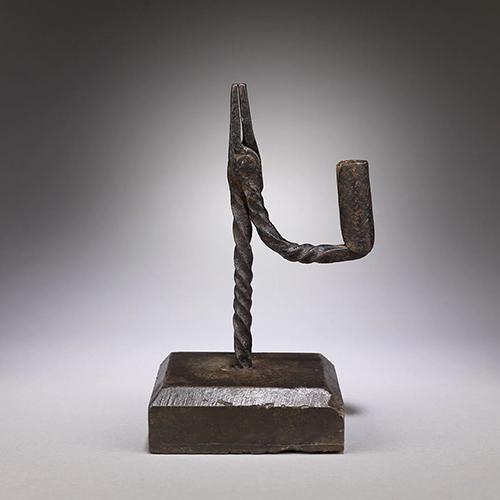

Terms of the Trade: Rushlight
One of the oldest and simplest forms of lighting, rushlight candles have been in common use since before the rise of the Roman Empire and continued to be used in rural parts of Britain well into the 20th century.
Rushlights are produced by cutting the long stalks of rush plants, which grow in abundance in the UK in marshes, bogs, and wet meadows. The green peel is then skinned from the plant and the white fibrous pith hung in bunches to dry before soaking in animal fat, grease, or oil, such as rapeseed oil.
The long reeds can then be dipped repeatedly after drying to build up a rudimentary layered candle which when anchored by its centre can be lit at both ends simultaneously to provide double the illumination.
Since all the raw materials required were either free to harvest or a by-product of cooking, the rushlight offered a cheap, inexhaustible supply of light through the long winter months for even the poorest of households.
Given that they were rather messy to produce and would burn out in no more than 30 minutes, rushlights remained a poor man’s lighting solution with the wealthier members of society preferring beeswax candles for lighting castles, cathedrals, and country houses.
That would change for many in 1709 when the British Government introduced a candle tax which not only levied a duty on candlemakers for each candle produced but also prohibited the making of candles in private households without the purchase of a licence.
Since rushlights were exempt from the new legislation, many households switched from using candles and a thriving cottage industry sprang up to support the increased demand. Although this does not appear to have affected the Duke of Bedford who it is claimed to have spent more than £600 on 1,000 candles to illuminate a private event.
The tax was eventually repealed in 1831 and the popularity of rushlight’s dwindled with the increasing affordability of candles, before finally giving way to electric lighting following the patenting of Thomas Edison’s incandescent light bulb in 1879.
Rushlight holders
Antique Rushlight holders or Rushnips as they are sometimes known have become much prized by collectors due to the unique individuality of their design. Rushlights were never mass produced and often homemade or manufactured by local craftsmen and blacksmiths resulting in slight variations in each design.
Table mounted or floor-standing, rushlight holders are normally mounted on a heavy solid wood base or a wrought iron stand to ensure stability. Common to all is a set of metal jaws or clips which anchored the rush light in place, usually at a 45-degree angle to combine slowest burn time with brightest illumination.
It is said that a rushlight anchored in a vertical position will last longer but burns with a dimmer flame, while a rushlight held horizontally will burn too fast, thereby explaining the jeopardy of “burning the candle at both ends”.
Most rushlight holders also come with an arm, or curl emanating from the central stem which is designed to counterbalance the weight of the rushlight. In the most rudimentary examples, the balance is purely functional but on occasion these can be finished with an artistic motif and in some cases a candle socket for those who could afford it.
To view a selection of rushlight holders currently available from BADA members click here

